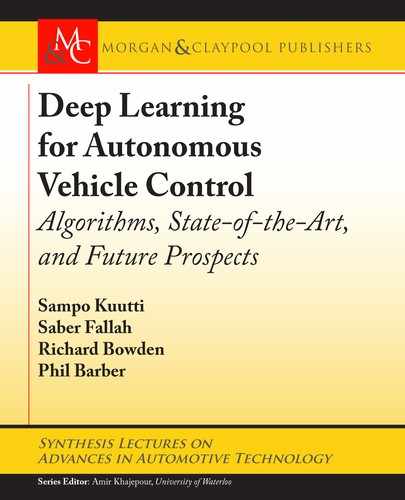42 4. SAFETY VALIDATION OF NEURAL NETWORKS
for functional safety, through methods such as formal methods (if possible), black box testing,
cross validation, and visualization. However, for online learners, validation should continue even
after deployment. is will include methods from run-time monitoring and software safety cages
which can ensure the safety of the system in real time. In summary, the discussion provided in
this chapter indicates that the validation plan of a neural network system should include different
techniques which have their own limitations and strengths to take advantage of their synergistic
effects.
4.3 SUMMARY
is chapter focused on the safety validation of deep neural networks within autonomous vehi-
cles. e difficulty of effective functional safety validation of deep neural networks is seen as a
critical challenge for practical and deployable autonomous vehicles. e safety-critical nature of
autonomous vehicles means that the safety of each sub-system must be validated to a high safety
assurance. However, due to the complexity and opacity of these systems, there are currently no
effective techniques to validate the safety of deep neural networks. is chapter discussed these
issues in-depth, and reviewed on-going research attempting to solve such issues. Six classes of
safety validation techniques were introduced, and the strengths and limitations of each class
were discussed. Since each class has their own limitations, effective validation strategies will
likely have to use techniques from all available classes.
..................Content has been hidden....................
You can't read the all page of ebook, please click here login for view all page.
